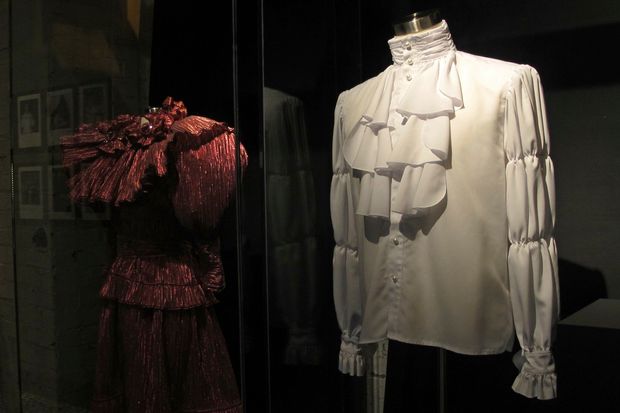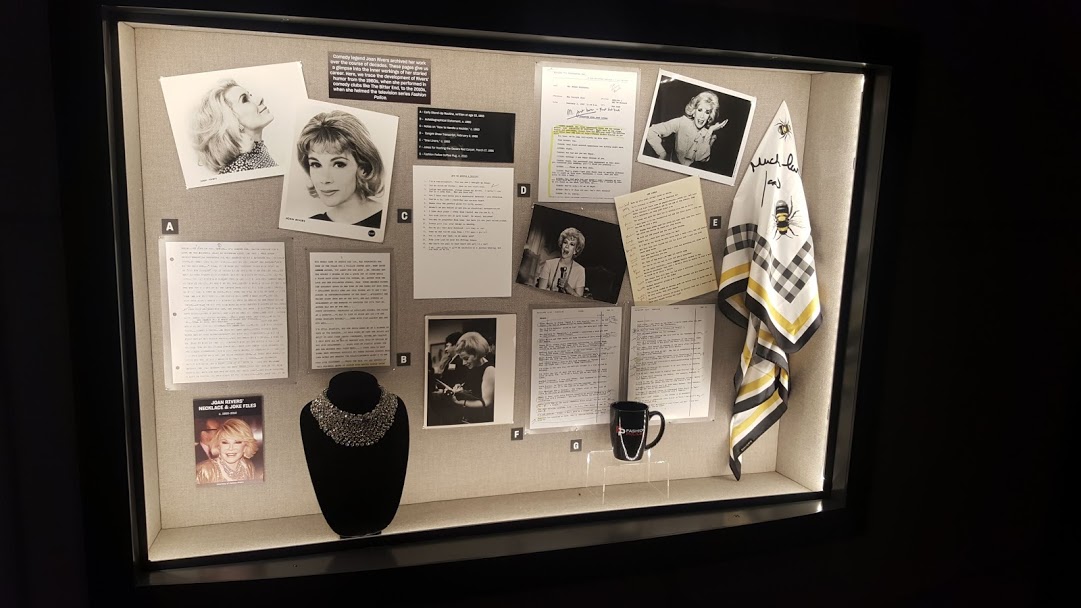This is the newest post in our There’s an Archivist for That! series. In this post, Harold Housley, Archivist for Architecture, Arts and Design at Arizona State University Library, describes the uniqueness and challenges of Design and Architecture Collections and offers his interpretation of the International Design Day theme, Suspended in Transition. This interview was conducted by Committee on Public Awareness (COPA) member Claudia Willett.
Claudia Willett: Let’s start with a brief introduction of yourself to the readers.

Harold Housley: I’ve worked for Arizona State University (ASU) Library since 2007, currently as Archivist for Architecture, Arts and Design. My previous experience includes working as an archivist for the National Park Service. I am a member of the Academy of Certified Archivists and SAA. I earned a Master of Arts in History from Arizona State University and a Bachelor of Arts in History from the University of Arkansas-Little Rock.
CW: Can you talk about your role as Archivist for Architecture, Arts and Design?
HH: I am responsible for overall management of Design and the Arts Special Collections, which is primarily an architectural archives and manuscript repository. The collection developed in the 1970s and 1980s out of interest by School of Architecture faculty members in collecting primary and secondary sources on two prominent architects important in Arizona history, Paolo Soleri and Frank Lloyd Wright. The opening of a new building for the College of Architecture and Environmental Design in 1989 created the space to develop and expand the collection to include architectural drawings and files from prominent architects such as Victor Olgyay, a pioneer in climate-responsive architecture, and Blaine Drake, a former Frank Lloyd Wright apprentice and key figure in post-World War II modernism in Arizona.

The collection has evolved over the years to include textual records, architectural drawings, presentation boards, and project files that document desert-sensitive design and the development and evolution of mid-century and modern architecture in the Southwest. The greater Phoenix area has a rich history of significant mid-century modern architecture and the presence of the architectural school at ASU has helped the library to acquire the drawings and papers of architects such as Alfred Newman Beadle and Will Bruder.
CW: Can you describe your organization and the collections?
HH: ASU Library has a wealth of archives and special collections resources grouped under Distinctive Collections and Archives, the Labriola National American Indian Data Center, and the Senator John McCain Papers Project. Design and the Arts Special Collections falls under Distinctive Collections and Archives, which also includes Rare Books and Manuscripts, the Child Drama Collection, Greater Arizona Collection, Chicano/a Research Collection, Black Collections and University Archives. The Labriola National American Indian Data Center has both primary source materials (photographs, oral histories, manuscript collections) and a large collection of books, journals, and Native Nation newspapers. The Senator McCain Papers Project processes and manages the papers of longtime Arizona senator and former presidential candidate John McCain.
CW: International Design Day is April 27 and the theme is ‘Suspended in Transition’. How does this theme apply to your work or experience with design collections?
HH: I find this theme very relevant to my work as an archivist and probably many other archivists would agree that traditional ways of acquiring and managing collections are in transition and need to evolve to meet the challenges of the present and future. I think other aspects of the theme are also relevant to archivists, such as that the pandemic has fostered the proliferation of new methods of collaboration and communication and created an opportunity to explore alternative ways of doing our work.
CW: Can you talk about some challenges unique to your collections?
HH: The large number of oversize items usually found in architectural collections definitely creates storage challenges. The variety of records found in architectural/design collections means you need to have both traditional archival shelving to accommodate paper records and photographs but also lots of flat filing cabinets for drawings.
Reference also presents some interesting challenges beyond dealing with large-format materials. For example, the access point for many researchers looking at a specific building is the address, which is often not listed in a finding aid. So I have found it useful to have separate drawings inventories that provide those item-level details that help in reference but may not be included in a collection finding aid.
CW: What is something you wish more people knew about Architecture and Design collections?
HH: There are some real “hidden treasures” in architecture and design collections. Examples include designs for buildings that, for one reason or other, were never built. It is fascinating to imagine what a completed building may have looked like. I also really enjoy looking at houses that architects design for themselves. Residential design projects usually involve the architect and client working closely together to bring a design into reality. But when the architect does not need to cater to the wishes of the client, I think there is more freedom to explore a particular theme or experiment in a style without having to answer to an outside client.

Architecture and design collections, because of their strong visual appeal, have the ability to connect with everyone. Most architectural collections found in archives are a blend of personal papers and business or professional records, so you have documents, such as correspondence, that are typically found in other types of manuscript collections. But you also have lots of very eye-catching materials that are works of art, such as full-color architectural renderings. So even if someone has no prior knowledge of or experience using archives, they can appreciate the value of what they are looking at.













































